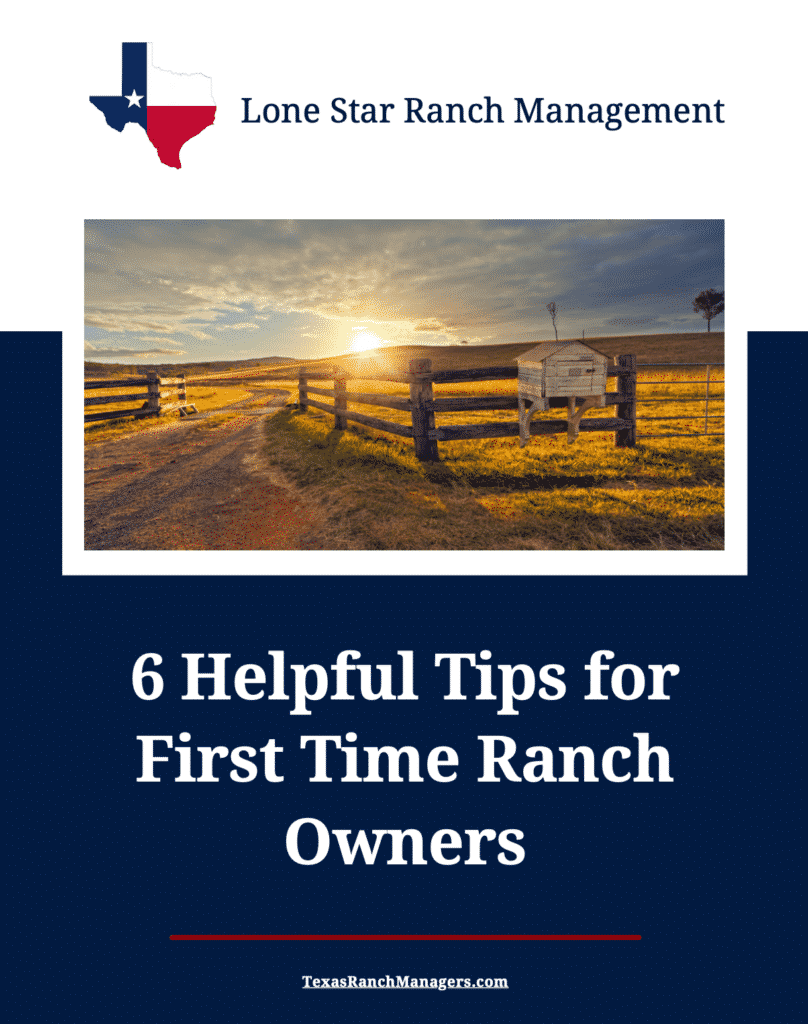So, you have been thinking about raising chickens on your ranch, but you feel a little intimidated by everything you have heard. No problem! Lone Star Ranch Management is here to help you get started.
Before starting any new endeavor, you should do your research. Learning all you can and formulating a plan ahead of time will make raising chickens simple and smooth. To get started, you should consider several things:
- What is your purpose for raising chickens?
- What type of chickens should you raise?
- What benefits can you have from raising chickens?
- How will you house your chickens?
- What will you feed your chickens?
- How much does it cost to raise chickens?
Purpose
People raise chickens for a variety of reasons, and before jumping in headfirst, you need to determine what you expect to gain from raising chickens. Your purpose will drive the rest of your decisions.
The most obvious reason people choose to have chickens is to produce their own eggs either for personal use or to sell for profit. Additionally, having your own chickens could mean you have a readily available source of meat for your family. Then, some ranchers decide to raise chickens for the purpose of selling baby chickens or adult chickens to others. Lastly, you might decide to raise chickens just because they are quite entertaining to watch.
Whether your purpose is one, two, or all of the reasons mentioned above, determining why you want to raise chickens is a step you must do before considering everything else.
Types of Chickens

After figuring out why you want to raise chickens, it is time to decide what type or types you need.
First, you can choose to purchase baby chicks that are just a few days old. This will require a little more effort on your part, and it will take longer for you to see any eggs. However, there is nothing more adorable than a group of baby chicks. Plus, they are easier to find and cheaper to purchase.
Some ranchers choose to buy either a “teenage” chicken which is about 20 weeks old or an adult chicken. If you go this route, you will get eggs much faster, but upfront costs are more. Also, they are not as easy to find.
In addition to the age of the chickens, you will need to select a breed. There are over a hundred breeds, so you will need to pick breeds that fit your climate and your expectations. Some breeds are more suited for children. While other kinds are better for producing high volumes of eggs. Furthermore, if your plan is to produce more chickens, you need to find hens that will actually tend to a nest of eggs. Some chickens will not sit on eggs in a nest.
Benefits
Raising chickens on your ranch has several benefits. One benefit is that you can have a steady supply of fresh eggs during the prime egg laying seasons (Fall and Spring). You also can have a home-grown source of meat for your family. Chickens will bring in money from the sale of eggs and birds as well.
A couple of other benefits are that chickens will eat insects and weeds in your yard and that they provide a natural compost or fertilizer for gardens.
Of course, chickens are highly entertaining to watch, and if you have young children, they will have a blast watching and chasing your chickens around the yard.
Housing

Selecting the right housing for your chickens can not only keep them safe but can also help keep them healthy. If you decide to start with baby chicks, you will need to keep them warm either with heat lamps or climate-controlled housing. They need to be in 90+ degrees until they are 4 weeks old.
Once your chickens have matured some, you will need a chicken coop large enough for the chickens to move about easily. If the space is too confined, chickens can get diseases that spread quickly, potentially wiping out your entire group.
You will also need a hen house for them to lay eggs. Make sure your structure is set up for you to easily retrieve eggs and remove chicken poop. It should be built well enough so that snakes, foxes, or other predators cannot get inside.
Some ranchers allow chickens to have free range of designated areas. This allows chickens to play freely and forage for their own food. At night, most chickens will automatically return to their coop for protection. Locking them up each night offers free range birds greater security from predators. There are also some breeds of dogs that are good for guarding chickens.
Food
Chickens can be easy to feed because they will eat just about anything. If they have access to plenty of space, they will find their own food to eat (insects and weeds). You should supplement their food to ensure they are getting enough protein and provide them with a consistent and clean water source. If chickens do not have enough protein, they will sometimes eat their own eggs and without enough calcium, their eggshells can become soft.
If you are housing chickens in a coop with no natural food sources, you will need to feed and water them daily. Feed stores have many cost-effective food options. However, your chickens can eat your leftovers as well!
Cost
The upfront cost to raise chickens really depends on your purpose, type of chicken, number of chickens, and housing. At a minimum, you should expect to spend around $500 to get started – with that number increasing based on your decisions.
For most small operations, the only ongoing cost you will need to budget for is for food.
Conclusion
If you have decided you want to move forward raising chickens on your ranch, your well researched and crafted plan can lead to many years of a sustainable food and income source. You can always reach out to Ryan at Lone Star Ranch Management for guidance and resources at 979-253-9662 or ryan@texasranchmanagers.com.
Additional Resources:
Raising Chickens 101: A Beginner’s Guide to Chickens | The Old Farmer’s Almanac
https://www.almanac.com/raising-chickens-101-how-get-started
Murray McMurray Hatchery





